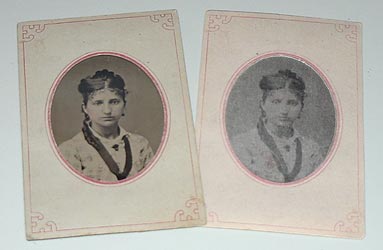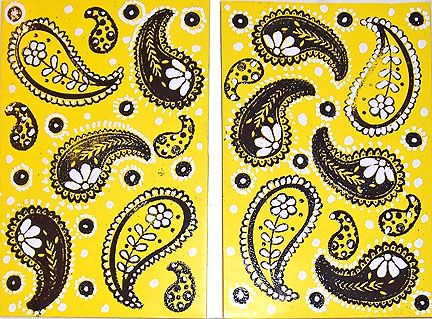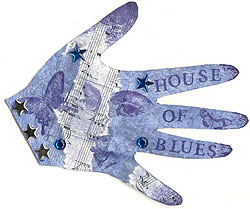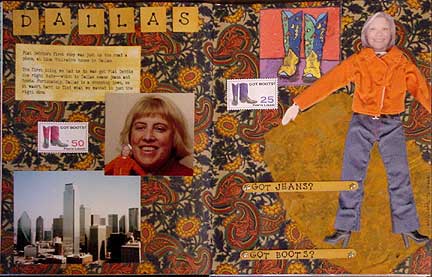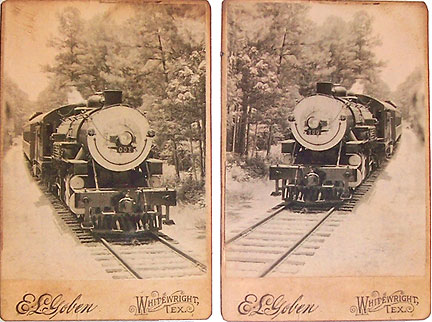 These two antique cabinet cards are complete fakes, made for an altered book layout about a train crash that happened in 1896. They started as a single black and white photo of a train that was taken fairly recently, and printed on glossy stock.
These two antique cabinet cards are complete fakes, made for an altered book layout about a train crash that happened in 1896. They started as a single black and white photo of a train that was taken fairly recently, and printed on glossy stock.
I wish you could hold these cards in your hand, because even when mixed with the real thing, it’s hard to tell they’re fakes. I achieved this effect with a little computer magic and some smart paper choices. Here’s how they were made:
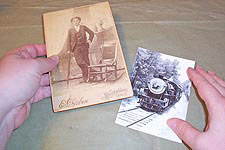 Here’s where I started, with a single black and white photo of a train, and a real cabinet card. I chose this particular cab card because it has a footer that worked for the project—it’s actually from a town in Texas that’s very close to the location of the train crash. It’s also close in size to what I’ll need for my faked photos.
Here’s where I started, with a single black and white photo of a train, and a real cabinet card. I chose this particular cab card because it has a footer that worked for the project—it’s actually from a town in Texas that’s very close to the location of the train crash. It’s also close in size to what I’ll need for my faked photos.
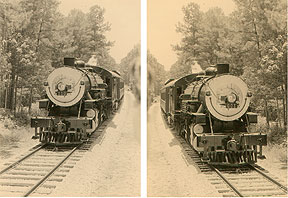 I scanned the train and the cab card, and split them into two files. Using PhotoShop, I recolored the train photo to match the tones of the cab card, and added noise to give the photo a less modern look. Then I duplicated the photo to create my two trains. To keep them from looking so much like a mirror image of the same train, I resized one so it appears larger in the frame.
I scanned the train and the cab card, and split them into two files. Using PhotoShop, I recolored the train photo to match the tones of the cab card, and added noise to give the photo a less modern look. Then I duplicated the photo to create my two trains. To keep them from looking so much like a mirror image of the same train, I resized one so it appears larger in the frame.
I printed this on ivory cotton stock, using my color laser printer.
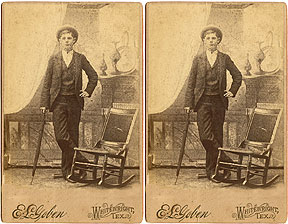 I did a little cleaning of the cab card scan to remove most of the obvious breaks and creases. I also cloned a bit of the frame so the old photo wouldn’t show when the new one was layered over it. I resized the card so the photo would fit on it.
I did a little cleaning of the cab card scan to remove most of the obvious breaks and creases. I also cloned a bit of the frame so the old photo wouldn’t show when the new one was layered over it. I resized the card so the photo would fit on it.
I printed this file on smooth, glossy paper, because the cab card frame is just a bit shinier than the face of the photo. Printing on different papers really helps give the finished product a more realistic look.
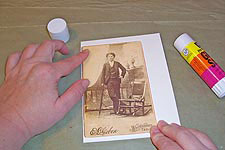 I glued the cab card prints to a piece of white chipboard using a glue stick, and paying extra attention to the edges. I really want it to be hard to tell that this top layer was glued in place, since the writing on most cab cards is stamped into the board.
I glued the cab card prints to a piece of white chipboard using a glue stick, and paying extra attention to the edges. I really want it to be hard to tell that this top layer was glued in place, since the writing on most cab cards is stamped into the board.
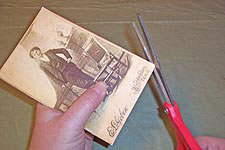 I cut the cards out, rounding the corners slightly.
I cut the cards out, rounding the corners slightly.
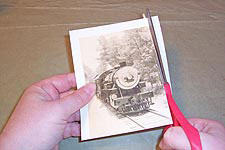
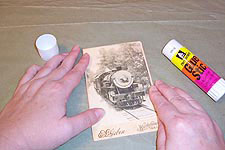 I cut the new photos out, and glued them onto the cards using a glue stick. These went right over the prints of the old photo, which I used as guides for poisitioning.
I cut the new photos out, and glued them onto the cards using a glue stick. These went right over the prints of the old photo, which I used as guides for poisitioning.
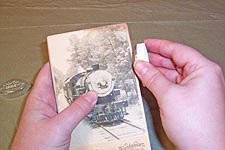 Each card was aged with several colors of chalk inks. This helped make them look less like duplicates, and more like individual photos.
Each card was aged with several colors of chalk inks. This helped make them look less like duplicates, and more like individual photos.

